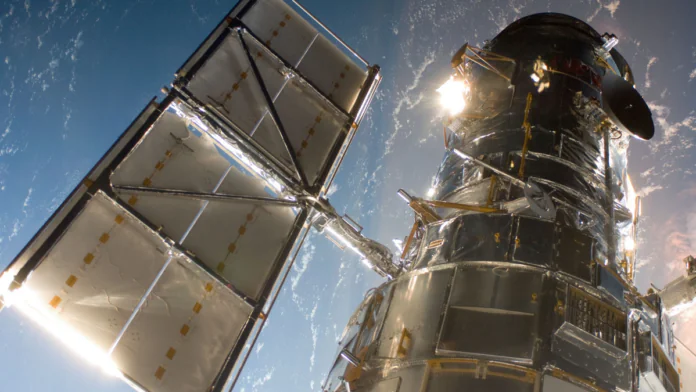© ROOT-NATION.com - Use of content is permitted with a backlink.
While the public’s attention is focused on NASA’s James Webb Space Telescope, the Hubble Observatory continues to be a useful tool in astronomers’ arsenal. This time, the telescope photographed a pair of Gerbig-Aro objects (HH1 and HH2), which are located in the Orion constellation at a distance of about 1,250 light-years from Earth.
Object HH1 is the cloud that glows above the bright star in the upper right corner of the image, and HH2 is the cloud in the lower left corner of the image. At the same time, the young star system, which caused the appearance of Gerbig-Aro objects, is hidden behind thick dust clouds in the central part of the image. Despite this, one can see how a stream of ionized gas bursts out of the dust cloud.

Gerbig-Aro objects are glowing clumps that form near some newborn stars when the jets of ionized gas they eject collide with the surrounding gas and dust at enormous speeds. In 2002, the Hubble telescope helped scientists learn that some of the gas and dust in HH1 is moving at a speed of more than 400 km/s.
The current observation was made with the Hubble Telescope’s Wide Field Camera 3 instrument using 11 different filters in the infrared, visible, and ultraviolet spectra. Each of these filters is sensitive to a small part of the electromagnetic spectrum, and they help astronomers monitor the various processes that cause the emission of light at specific wavelengths. In the future, scientists intend to use the James Webb telescope to observe this object.
You can also help Ukraine fight with Russian occupants via Savelife or via an official page of the National Bank of Ukraine.
Recommended reading:
- Hubble photographed an unusual pair of spiral galaxies
- The James Webb telescope showed Jupiter in all its glory


